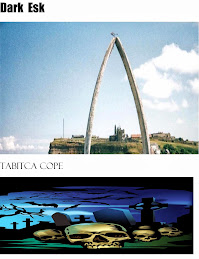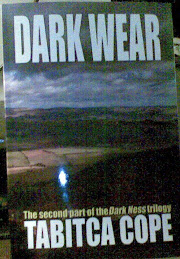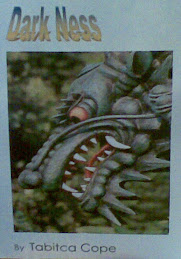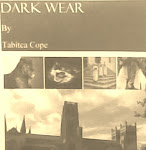The Arizona
Bigfoot – The Mogollon Monster
The Mogollon
Monster is a beast reported to live in Arizona along the Mogollon Rim, but
has been sighted in Prescott and the Grand
Canyon. It is most often described as a Bigfoot type creature. It
is said to be bipedal ,covered in long black or brown hair, sometimes with red
eyes, but the eyes are large and a hairless face, chest and hands.
Sightings go
back to the early 1800’s when settlers of the area met up with the creature in
the canyons and forests of the region. Local Native Americans in the region told stories about big hairy men who lived
within the forests and canyons. One legend told of a rival who stole a chief’s
wife, so the chief commanded the
medicine man to transform the rival into this creature, which still roams the area.
In a 1903 edition of The Arizona Republican, I.W. Stevens reported seeing the creature near
the Grand Canyon. His testimony stated “[It had] long white hair and matted
beard that reached to his knees. It wore no clothing, and upon his talon-like
fingers were claws at least two inches long.” He apparently got closer to it
and reported, “Upon further inspection he noted ‘a coat of grey hair nearly
covered his body, with here and there a spot of dirty skin showing.” He saw the
creature drinking the blood from two felled cougars and when it spotted him, it picked up a club and screamed at him.
Don Davis, who went on to become a cryptozoologist,
saw the creature in the mid-1940s during a Boy Scout trip. He said, “The
creature was huge. Its eyes were deep set and hard to see, but they seemed
expressionless. His face seemed pretty much devoid of hair, but there seemed to
be hair along the sides of his face. His chest, shoulders, and arms were
massive, especially the upper arms; easily upwards of 6 inches in diameter,
perhaps much, much more . I could see he was pretty hairy, but didn’t observe
really how thick the body hair was. The face/head was very square; square sides
and squared up chin, like a box.”
The White Mountain Apache Nation, have had encounters
as well. In 2006, Collette Altaha said, “We’re not prone to easily talk to
outsiders, but there have been more sightings than ever before. It cannot be
ignored any longer.”
Marjorie
Grimes, a resident of nearby Whiteriver, said she had seen it and described it
as: ‘All black and tall. The way it
walked; it was taking big strides. I put on the brakes and raced back and
looked between the two trees where it was, and it was gone!’
Tribal police lieutenant Ray Burnette said, “A
couple of times they’ve seen this creature looking through the windows. They’re
scared when they call. The calls we’re getting from people – they weren’t
hallucinating, they weren’t drunks, they weren’t people that we know can make
hoax calls. They’re from real citizens of the Fort Apache Indian Reservation.”
A more
recent sighting was reported in 2014. A 28-year-old woman, Y. Estevez, a
sociology student ,believes she came across an unidentified animal while hiking
the Canyon Point trail in the region of the Mogollon Rim. She was alone and
described it as looking like a troll and it was drinking from a pool of water.
So myth
or monster? Until definite proof is uncovered the jury is out.





















